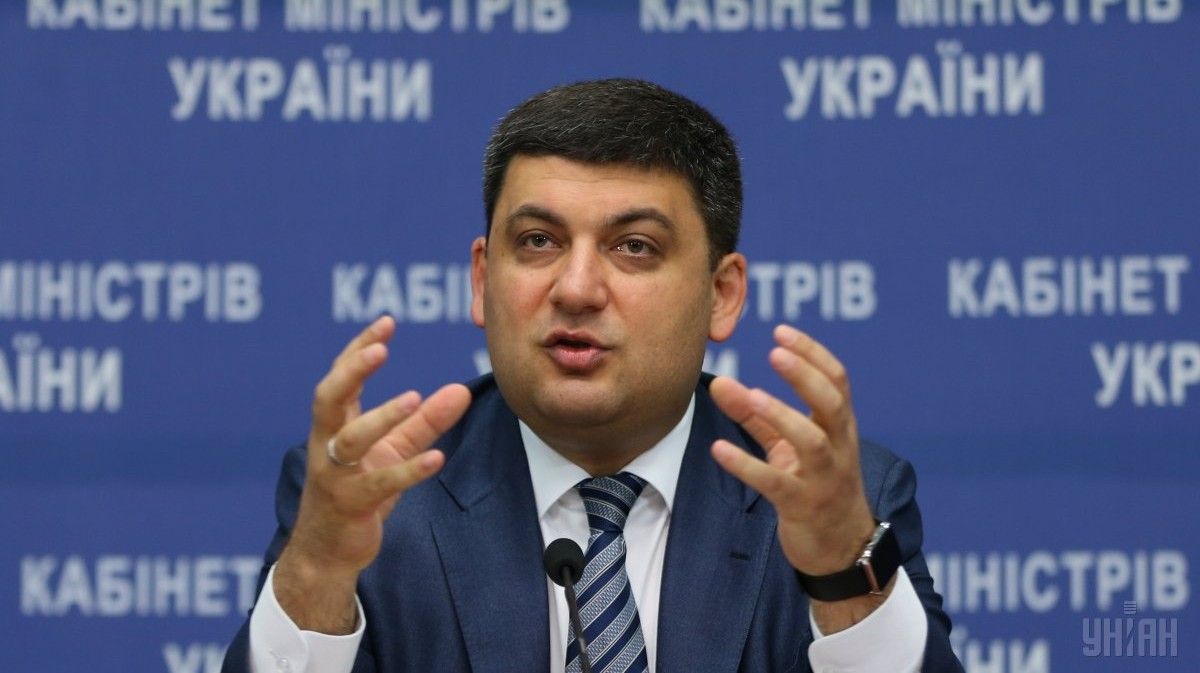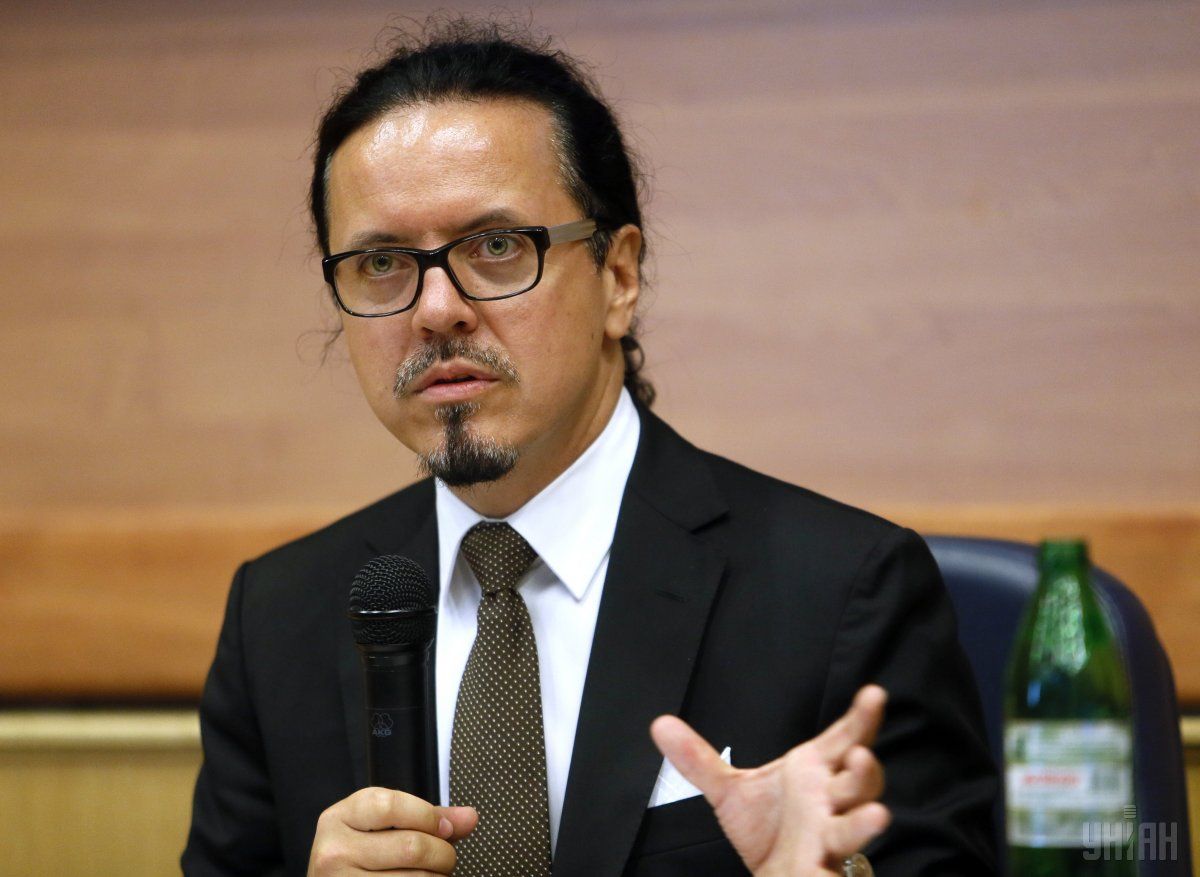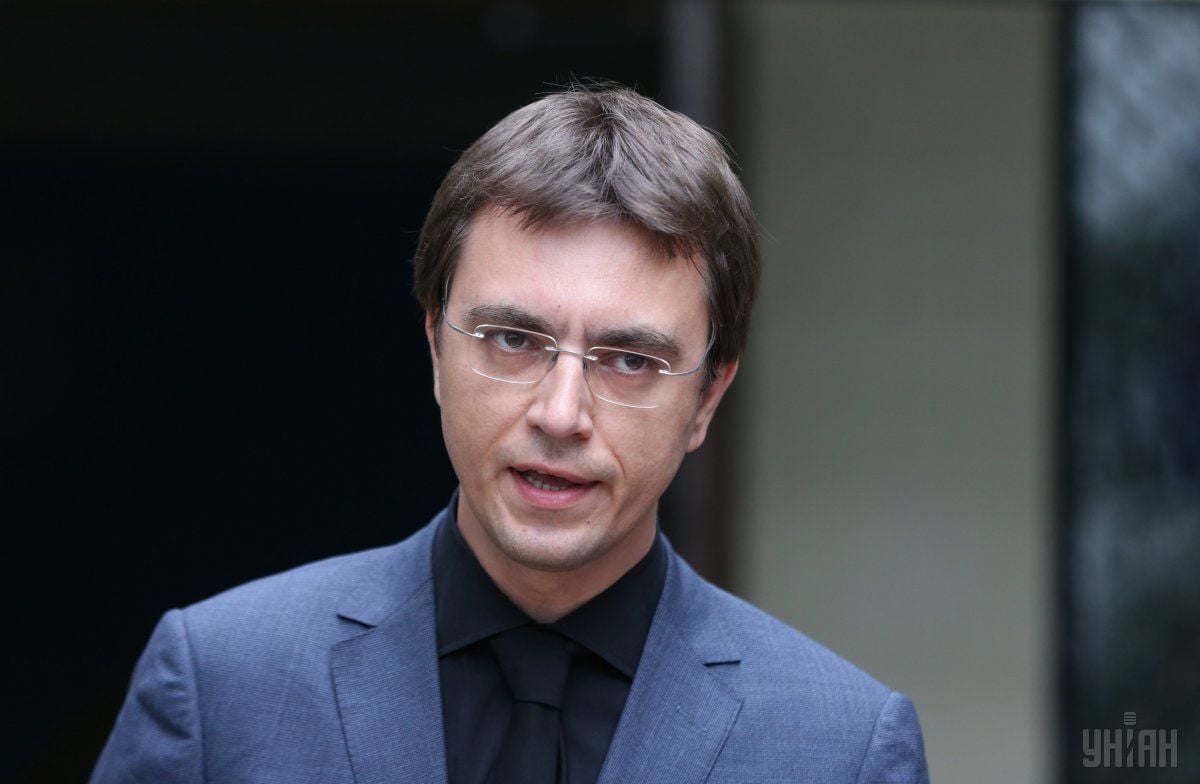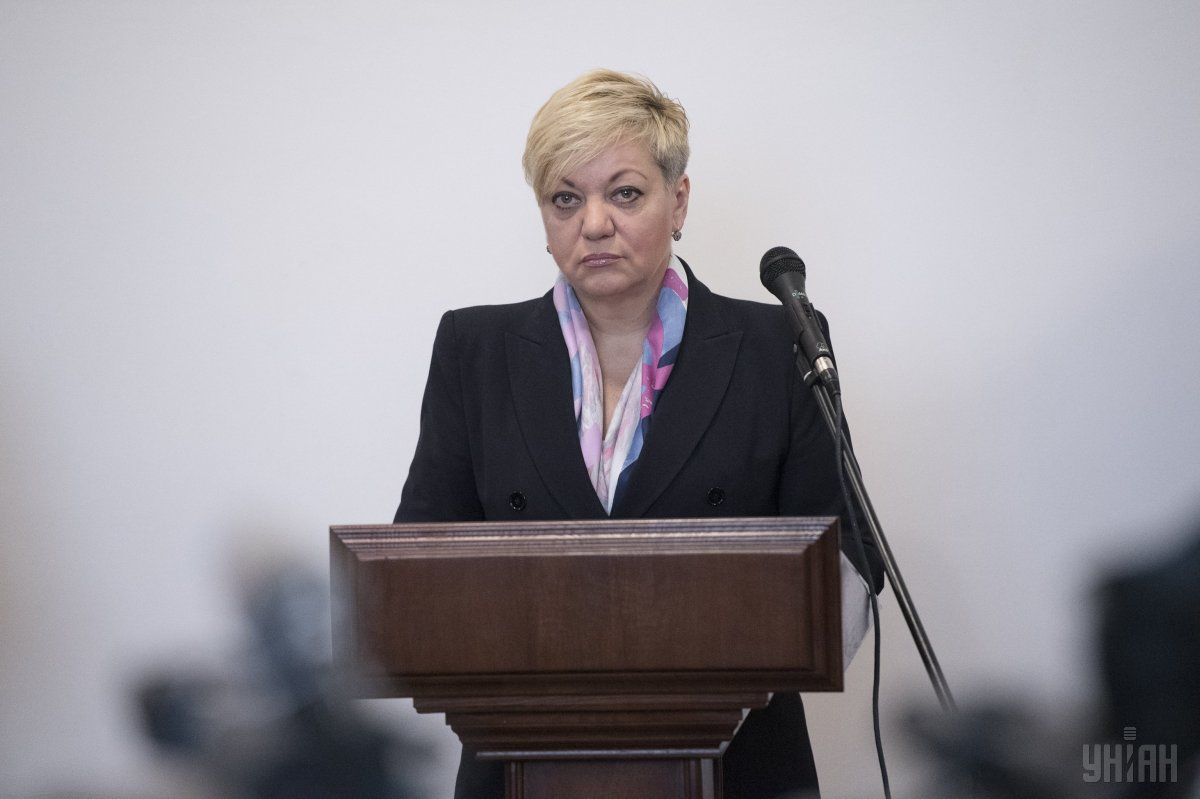
Week’s balance: Cabinet’s strategic plan, battle for Ukrainian Railways, and optimistic expectations of businesses
The Government presented its medium-term plan of reform aimed at securing economic growth, Ukrzaliznytsia [Ukrainian Railways] was withdrawn from the jurisdiction of the Ministry of Infrastructure, while the National Bank, State Statistics Service, and businesses announced their forecasts for the next 12 months - these are the main economic news of the outgoing week.
The week’s main economic event was the Cabinet’s presentation of the main provisions of its Strategic Reform Plan until 2020. The objective is to change the model of the country’s development, move away from a domination of exports of raw materials, and increase own production of products with high added value, which enjoys high demand both in the internal and international commodity markets. But the main thing is consolidating economic growth, which started taking shape in 2016, and accelerate it.
"We are changing the model of economic development. While the previous model was based on the expansion of consumer demand, now the main growth drivers will be the exports, as well as investment and innovation demand," First Deputy Prime Minister Stepan Kubiv said, commenting on Cabinet proposals.
The key priorities of the new economic policy will be the development of processing industries, hi-tech innovative industries, the overall modernization of the economy, increasing commodity exports - both to the EU market and the markets more traditional for Ukraine in Africa and Asia.
In the processing segment, the main benchmarks shall be productivity growth and the creation of 1 million new jobs. According to the Cabinet’s calculations, by 2020 the number of Ukrainians employed by processing factories should grow from the current 1.3 million to 2.3 million.
In the area of innovation, the focus will be on national science and technology developments and technological startups. As stated by Prime Minister Volodymyr Groysman, Ukraine should finally realize its productive potential and give impetus to further development - through the organization of technology parks, support of scientists, the implementation of own technology by attracting investment. "We need to ensure an economic breakthrough," said Groysman.

Statistics confirm the message on the revival of the country's industrial potential. The State Statistics Service this week unveiled the figures, showing that in 2016 Ukraine has managed to stop the negative trend of the previous four years and saw a positive growth rate of 2.4%.
The government’s export strategy assumes an active expansion of a wide range of goods and services on all platforms available. There is a wide range of tools to implement the plan: from hosting trade forums to the conclusion of free trade zone agreements. According to Ukraine’s Trade Envoy Natalia Mykolska, Ukraine in 2017 intends to complete negotiations on the FTA agreements with Turkey and Israel – two of the country’s TOP 5 trading partners. The government also harbors high hopes regarding the meetings of intergovernmental commissions with India and China, scheduled for this spring. Of particular interest are the issues of agricultural exports and exports of machine building products.
All of this will improve the index of Ukrainian exports. For 11 months of 2016, it decreased by 6% compared with 2015, down to $32.7 billion. Among the main reasons for the drop were the continued commercial and transport embargo by Russia, the war in the east, the lack of lending to the real sector, a significant raw-material orientation of the economy and, as a consequence, high dependence on commodity prices. Last year they remained at a very low level.
At the same time, if the government's tasks are implemented, the share of manufactured goods in the structure of Ukrainian exports should amount to 75-80% as early as within three years. The volume of exports and range of the exports will expand and the investment will jump to about $8 billion.
The efforts to implement the plan are ongoing: this year, the Cabinet plans to raise at least $4.5 billion in foreign direct investments, compared to $3.8 billion in 2016. "Our goal is to increase GDP per capita from the current $2,000 to $5,000 within three years," said First Deputy Prime Minister Stepan Kubiv.
Ukrzaliznytsia put on Government rails
This week the row continued with the transfer of control over Ukrainian Railways from the Ministry of Infrastructure to the Government. At a Cabinet meeting on Wednesday Ukrzaliznytsia CEO Wojciech Balczun and then the head of the company’s Supervisory Board Yevhen Kravtsov reported on the results of 2016 and plans for 2017. The reports were not announced beforehand, therefore, becoming a surprise for the majority of ministers and press.
Both speakers sounded very optimistic assessing the results of their work and submitted some very ambitious plans. "IN 2017, we plan investments in rolling stock and infrastructure at the level of UAH 27.5 billion, which is 4.5 times more than in 2016," said Balczun, drawing particular attention to the fact that half of this sum will be spent on the purchase of Ukrainian goods and services. Also on the agenda is the modernization of ticket sales, introduction of free Wi-Fi services at stations, and launching new trains to Poland, Bulgaria, and Austria.
At the same time, Balczun said that the company’s main problem was and still remains constant pressure and sabotage of the company management’s actions. He did not name the exact "saboteurs" but said that corruption schemes had been revealed worth UAH 1 billion.

The same was said by Infrastructure Minister Volodymyr Omelyan. However, it is Balczun, who is the major adept of corruption, according to the minister. Omelyan called all company success too far-fetched and presented a thick folder of documents that supposedly prove the preservation of corrupt schemes and idleness of the company management. The minister said his agency feared that the situation would only get worse if the company was not returned under the infrastructure ministry’s control.

This public debate between Omelyan and Balczun was sharply interrupted by the head of government. Groysman has called on forwarding all files on alleged violations to the National Anti-Corruption Bureau and suggested not to confuse personal motives with public interests. In addition, Groysman said that it’s precisely Balczun who has corporate experience, having worked for big transport companies, but not the minister, whose official duties say he should contribute to the development of the state holding rather than interfere with his operations.
While Balczun thanked the prime minister for his support, Omelyan continues to insist on the need to return to railway giant under the wing of the Ministry of Infrastructure.
National Bank and businesses remain optimistic
National Bank Governor Valeria Gontareva took part in creating an economic picture of the outgoing week by holding a briefing on the issues of monetary policy, the first one since the beginning of 2017. She reported on maintaining the key rate at the same level of 14% per annum and estimated the economy growth in 2016 at 1.8%. The growth forecast for 2017 is 2.8%. At the same time, the National Bank estimates inflation in 2017 at 9%, while the government forecasts 8%. The NBU also expects by December to have increased the volume of foreign exchange reserves from the current $15.5 billion to $21.3 billion.

The National Bank is also quite optimistic with regard to cooperation with Ukraine’s key creditor, the International Monetary Fund, awaiting another loan tranche ($1 billion) as early as February. It is not excluded that there will be another three such tranches in 2017. According to the central bank, this will not only fulfill the plan for the country’s forex reserves but it will also provide sufficient tools to support exchange rate stability and fulfill government obligations amid further transformation of the banking system. Speaking of the reforms in the banking sector, Gontareva voiced the need to revise the strategy of development of state-owned banks in connection with the nationalization of PrivatBank, held at the end of 2016.
The business community has agreed with the NBU’s macroeconomic forecast. One of the country’s largest business associations, the European Business Association, also held a meeting of its members. Its head, Tomas Fiala, stressed that the business community was encouraged by the results of 2016 and was waiting for further reform and strengthening of the economic positions.
Saying that some positive surprises are expected in 2017, Fiala most probably meant price fluctuations in key commodity markets, so far playing in favor of Ukraine.
He added that EBA expected the inflation rate of 8% and a slight devaluation of the hryvnia within the single digits. The average rate in 2017 will amount to UAH 27,5-28,5 to the dollar, Fiala believes.
Among the government’s main challenges for this year is to resolve the issue of pension reform, launch the land market, implement judicial reform, continue the fight against corruption, and introduce other economic reforms required by the program of cooperation with the IMF.
The Cabinet made an important step in solving a long-term problem with the VAT reimbursement by approving a new procedure for maintaining a common register of VAT refunds, due to which the return of funds to enterprises will be "automated, daily-based and projected."
In the near future, the businesses will be able to evaluate the importance of the measures taken: the State Fiscal Service reported that the amount of compensation claimed by entrepreneurs in January reached a record UAH 22.4 billion, which is the largest volume of applications in the history of tax administration. If the process of payments will go smooth and without failures, the Cabinet will be able to declare that it has dealt with one of the long-term claims of investors and businesses to the Ukrainian authorities.
February will show whether Ukraine’s exit from an economic crisis has become steady. It will also identify whether the government’s efforts in terms of upping the wages have become a success and whether the strategy of the authorities on gas supplies to consumers during the heating period was right after all. We will also see whether the prices in drug stores will decrease, as promised by the prime minister. And finally, we will know the date of the meeting of the IMF Executive Board on Ukraine, which involves not only the prospects of receiving another $1 billion of the loan but also the new plan of reform for this year.
Olesia Safronova (UNIAN)

